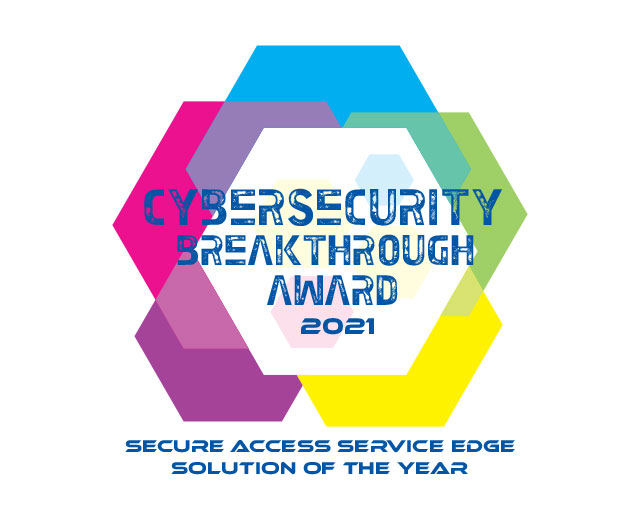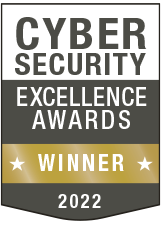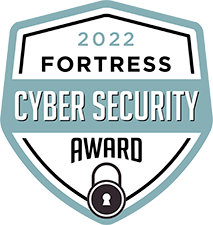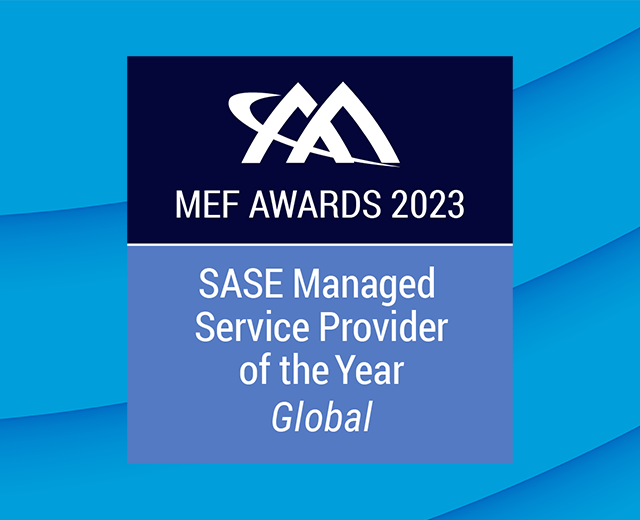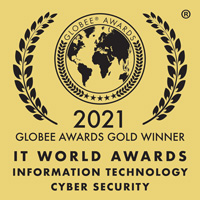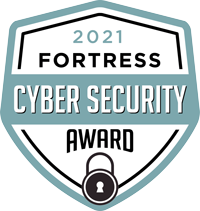AT&T Secure Access Service Edge (SASE)
AT&T Business combines leading managed SD-WAN services, cybersecurity capabilities, and the power of 5G to deliver cutting edge SASE solutions.

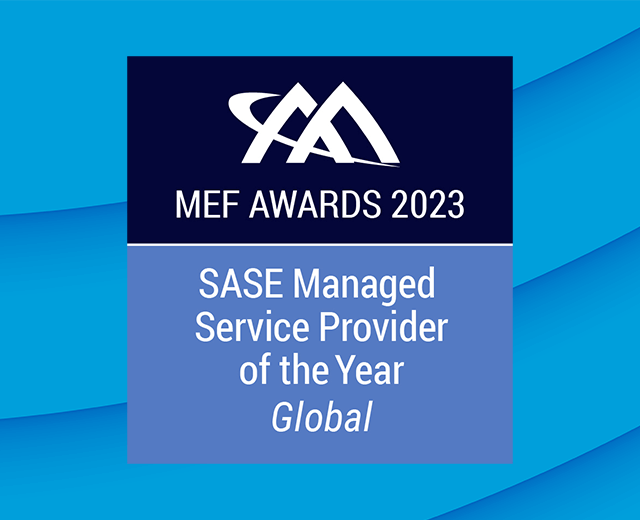
Why AT&T Business for SASE?
Converged network and security solutions for today’s modern business
Applications are moving out of the data center and into the cloud, more employees are working from remote locations than ever before, and data is being accessed from a wide range of company and personally owned devices. All of these factors make it difficult for network and security administrators to know what applications and data are being accessed by whom as well as their usage. And what isn’t seen, cannot be managed or secured.
With AT&T SASE, organizations can utilize the power of their network and security as a business enabler. Administrators are empowered to provide users with low-latency access to applications hosted at the data center or in the cloud, and to apply unified security policies virtually anywhere business is conducted.
Software-defined wide area network (SD-WAN)
Provides centralized visibility of all circuits across locations and a way to manage data flows.
Secure web gateway
Protects users virtually anywhere they are located to help provide that the sites they visit are both safe and appropriate for the workplace.
Firewall as a service (FWaaS)
Protects users and assets located on network against a wide range of modern threats.
Cloud access security broker (CASB)
Provides visibility into cloud-based application usage so security controls may be applied.
Zero trust network access (ZTNA)
Offers access to applications, by role or by user, often without placing users on the network.
AT&T Managed Services
Reduce burden on IT teams with deployment, policy design, 24x7 monitoring, maintenance, and troubleshooting.
Potential benefits
Enabling digital transformation with unified visibility and protection
Improved network performance
Deploy redundant, high bandwidth circuits from each location to the internet, while prioritizing mission-critical applications.
Lower cost and complexity
Consolidate networking and security services to a single provider and reduce the number of appliances hosted on-premises.
Better user experience
Offer users consistent, high-quality experiences when accessing applications or the internet.
Higher security efficacy
Apply unified security policies across locations, users, and devices and provide access to only the data required to complete job duties.
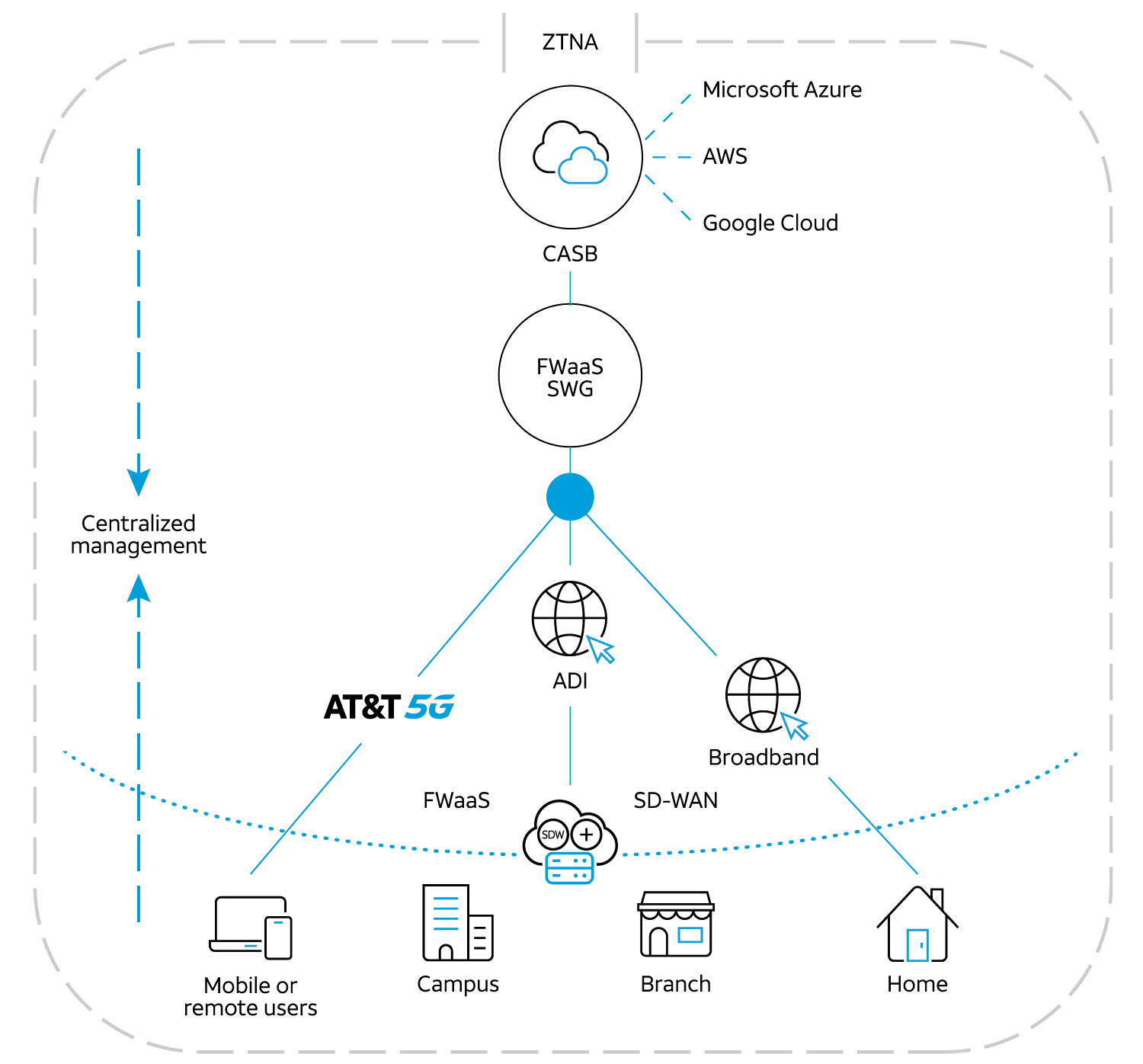
Use cases
Supporting the journey from hybrid to cloud, and every step in between

SaaS and cloud-based applications
Employees often utilize unsanctioned programs to complete work, which may store sensitive information. Administrators need visibility into what cloud-based applications are accessed by users so they can apply security controls.
Connected branches
Backhauling network traffic to the data center isn’t efficient when accessing the internet or cloud-based applications. Organizations need to connect their branch offices directly to the internet to improve performance.
Remote/mobile users
Employees now conduct business from many locations, utilizing company owned and personal devices. Businesses require solutions that provide efficient access to applications and consistent protection against malware or data loss.
Zero-trust network architecture
Organizations cannot operate under the old model of simply guarding the perimeter against external threats. Access to data must be limited to what is required and all traffic inspected.
Awards
Resources
FAQ
What is SASE?
SASE stands for Secure Access Service Edge and is an architecture model published by Gartner in 2019. It combines software-defined wide area networking (WAN) with comprehensive security functions in order to support the dynamic nature of today’s modern workforce.
What qualifies as a SASE solution?
There is no "off the shelf" SASE solution. Any combination of technologies that enable businesses to efficiently connect locations and users to the cloud, implement zero-trust, offer worldwide points of presence, and ability to consolidate vendors could be considered SASE.
How does SASE relate to Zero Trust?
The Zero Trust framework was released by Forrester in 2009. A couple of its key tenets are the principle of least privilege and that all traffic should be inspected, regardless of being on network. Some zero trust concepts are referenced in SASE, including the idea that access should be based identity, as opposed to location.
Should you go with a single vendor for all SASE technologies?
Consolidating vendors can help reduce the complexity of management but it may not always be feasible or advisable to source all SASE technologies from just one. Some factors to consider include product capabilities, points of presence, number of management platforms, and how responsibility of each technology is split amongst internal teams.
What are the benefits of working with an MSSP for SASE?
Managed Security Service Providers (MSSPs) offer a wide-range of solutions from industry leading vendors. In addition, they often handle the deployment of each technology, 24x7 monitoring, security and firmware updates, and troubleshooting support. Having an MSSP can help relieve the burden of day to day operations of connectivity and security products from internal technology teams, which is especially valuable during a time of skills shortage.
Related products
AT&T SASE with Cisco
New ways of working, new ways of connecting, new ways of protecting.
AT&T SASE Branch with Fortinet
Built-in security at the WAN edge with industry-leading performance.
AT&T SASE with Palo Alto Networks
A new approach to networking and security for today’s modern business.
AT&T SD-WAN
Enhances traditional WAN with intelligent dynamic routing, optimized cloud connectivity, and visibility into applications and performance.
AT&T Secure Web Gateway
Cloud-delivered, unified protection across users and devices.
AT&T Secure Remote Access
Enable employees with precise access to the applications and data required to do their job from anywhere.
Get a quote
We're here to help! Complete the form and we will be in touch soon.
